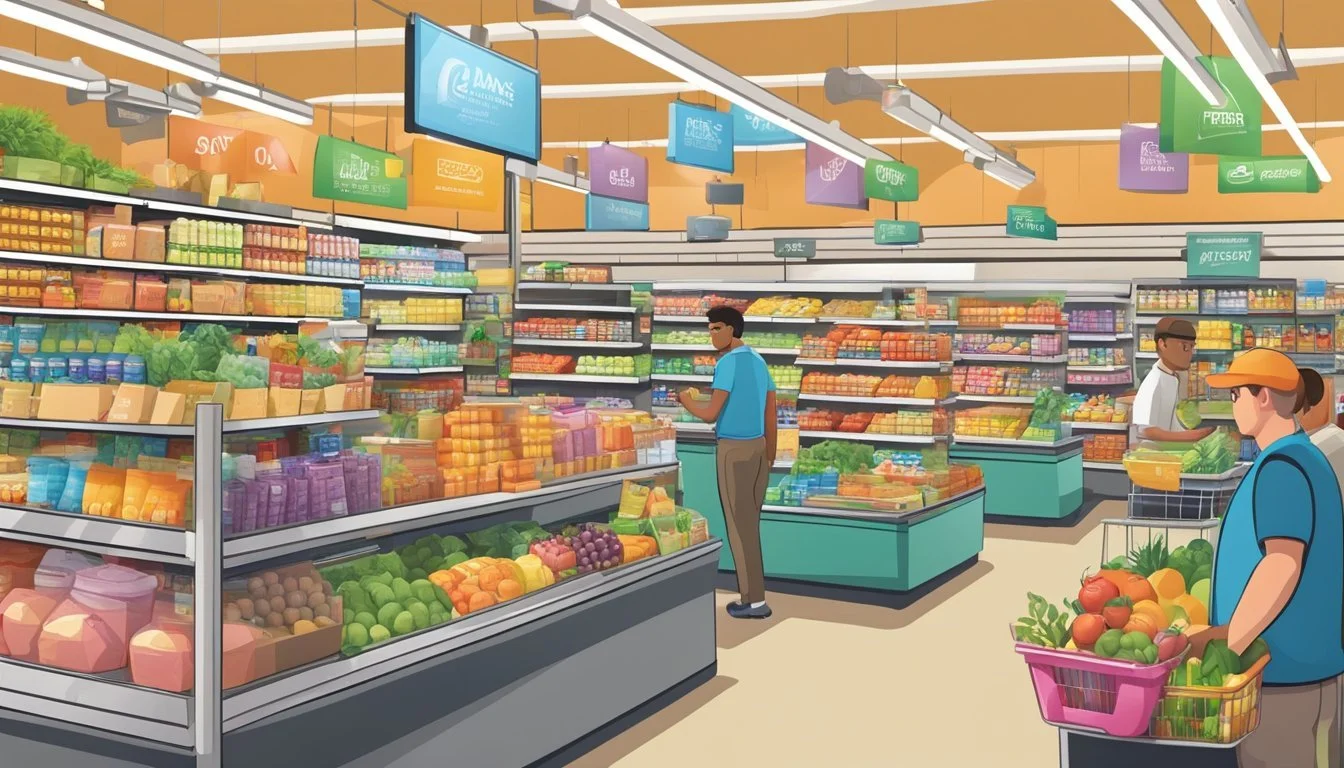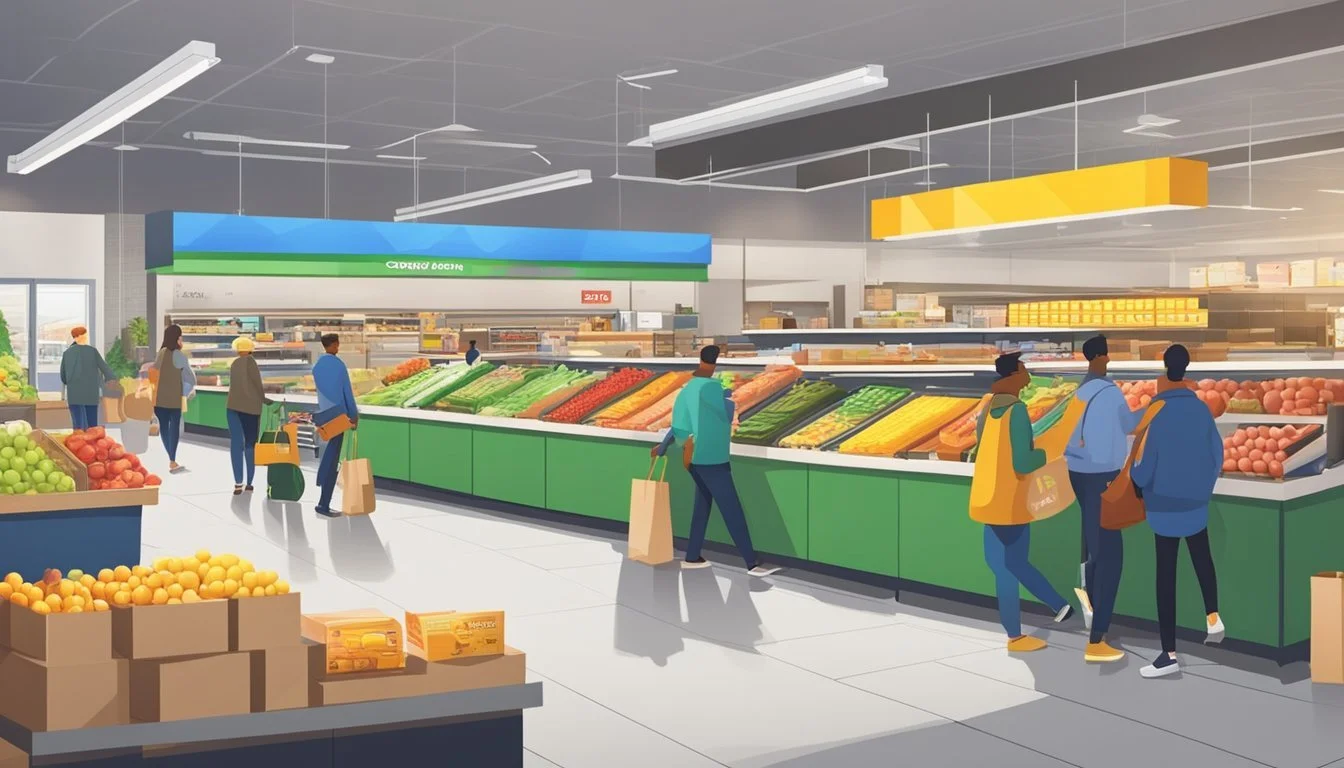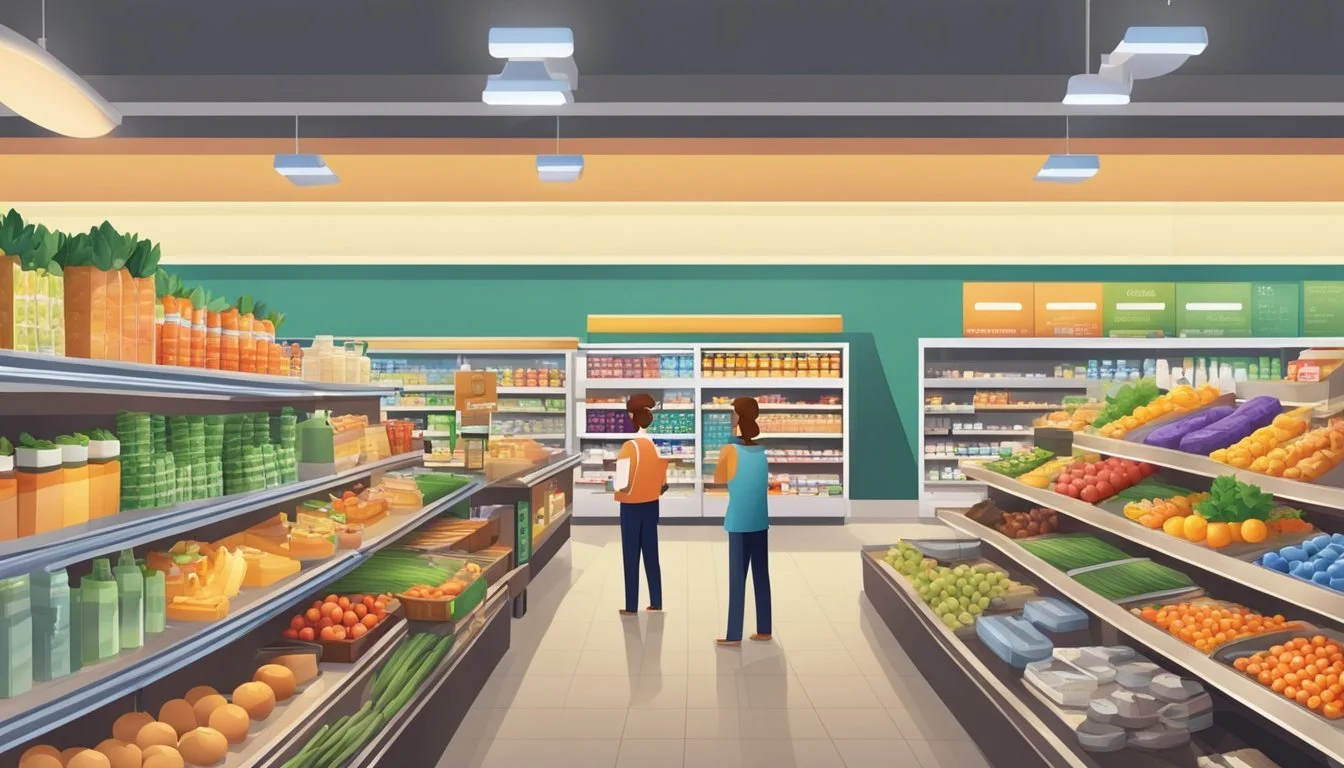Grocery Outlet vs Lidl
A Comprehensive Price and Quality Comparison
Grocery Outlet and Lidl have emerged as popular discount grocery chains, each offering unique shopping experiences for budget-conscious consumers. Both stores aim to provide quality products at competitive prices, but they differ in their approaches and offerings.
Grocery Outlet tends to offer more variety in brand-name products at discounted prices, while Lidl focuses on its own private-label items. This distinction can significantly impact shoppers' preferences and overall satisfaction. Grocery Outlet's ever-changing inventory creates a "treasure hunt" atmosphere, whereas Lidl provides a more consistent selection of staple items.
The layout and store aesthetics also play a role in the shopping experience. Lidl stores typically feature a modern, streamlined design with wider aisles and a more organized layout. Grocery Outlet, on the other hand, often has a no-frills warehouse-style appearance that emphasizes its discount focus. These differences in store atmosphere can influence customers' perceptions and shopping habits.
Background and History
Grocery Outlet and Lidl represent two distinct approaches to discount grocery retailing in the United States. Both chains have expanded rapidly in recent years, offering consumers low-cost alternatives to traditional supermarkets.
Evolution of Grocery Outlet
Grocery Outlet began in 1946 as a small surplus food distributor in California. The company focused on selling overstocked and closeout items at deep discounts. Over time, it evolved into a chain of bargain markets.
Grocery Outlet operates on a unique model. Independent owner-operators run each store, allowing for local customization. The company sources products opportunistically, buying excess inventory from manufacturers.
By 2024, Grocery Outlet has expanded to over 400 locations across the West Coast and Mid-Atlantic regions. Its "treasure hunt" shopping experience, with ever-changing deals, appeals to bargain-seekers.
Lidl's Journey in the Market
Lidl, a German discount supermarket chain, entered the U.S. market in 2017. The company aimed to challenge established discounters like Aldi with its no-frills approach and private-label focus.
Lidl's U.S. launch faced initial challenges. The company scaled back ambitious expansion plans and adjusted its store format to better suit American shoppers.
As of 2024, Lidl operates around 170 stores in the United States, primarily along the East Coast. The chain continues to refine its strategy, emphasizing fresh produce and in-house bakeries.
Lidl's U.S. presence remains smaller than rival Aldi, but the company sees potential for growth. It aims to differentiate itself through competitive pricing and a curated selection of European products.
Store Locations and Expansion
Grocery Outlet and Lidl have distinct expansion strategies in the United States. Both chains are growing their footprints, but with different regional focuses and approaches to entering new markets.
Grocery Outlet's Regional Presence
Grocery Outlet operates over 400 stores across the western United States and Pennsylvania. The chain has a strong presence in California, Oregon, Washington, Idaho, and Nevada. In recent years, Grocery Outlet has expanded eastward, opening locations in Pennsylvania and New Jersey.
The company's growth strategy focuses on opportunistic real estate acquisitions and partnerships with independent operators. This approach allows Grocery Outlet to maintain a local feel while expanding into new territories.
Lidl's Growth Strategy
Lidl entered the U.S. market in 2017 and has rapidly expanded its presence, primarily along the East Coast. The German discount chain currently operates around 170 stores in the United States. Lidl's expansion has focused on states such as Virginia, North Carolina, and New York.
The company has ambitious plans to continue its U.S. growth, targeting densely populated areas and competing directly with established chains like Aldi, Kroger, and Walmart. Lidl's strategy involves building new, purpose-built stores rather than acquiring existing locations.
Lidl has also made inroads into urban markets, opening its first Manhattan store to cater to city dwellers. This move signals the company's intention to compete in diverse retail environments.
Product Range and Quality
Grocery Outlet and Lidl offer distinct product ranges and quality levels. Both stores focus on providing affordable options but differ in their approaches to selection and brand offerings.
Assortment of Goods
Grocery Outlet features a constantly changing inventory with closeout deals and overstock items. This results in an eclectic mix of products that can vary significantly from week to week. Shoppers may find unexpected treasures alongside staple items.
Lidl, on the other hand, maintains a more consistent selection. The store offers a curated range of about 3,500 products, which is smaller than traditional supermarkets but covers most everyday needs. Lidl's layout is organized and predictable, making it easier for customers to find what they're looking for quickly.
Both stores stock pantry staples, snacks, and canned goods. However, Lidl tends to have a more extensive fresh produce section and bakery offerings.
Focus on Quality and Freshness
Lidl puts a strong emphasis on fresh produce quality. The store often sources locally when possible and offers a good selection of organic options. Their in-store bakery produces fresh bread and pastries daily.
Grocery Outlet's fresh produce quality can be hit-or-miss due to its closeout model. While shoppers can find good deals, the selection and freshness may vary. The store doesn't typically have an in-house bakery.
Both chains strive to offer quality meats and dairy products at competitive prices. Lidl often edges out in terms of consistency and variety in these departments.
Private-label Versus Big Brands
Grocery Outlet carries a mix of well-known national brands and lesser-known labels. The store's model allows them to offer big brand names at discounted prices when available.
Lidl focuses heavily on private-label products, with about 80% of their inventory being store-brand items. These products often match or exceed the quality of national brands while maintaining lower prices.
Both stores offer some organic and natural options, though Lidl tends to have a more extensive selection in this category. For personal care items and cleaners, Grocery Outlet might offer more familiar brands, while Lidl provides quality store-brand alternatives.
Pricing and Value Proposition
Grocery Outlet and Lidl both offer competitive pricing, but employ different strategies to deliver value to customers. Their approaches to sales, promotions, and cost-saving measures shape the overall shopping experience.
Comparing Price Points
Grocery Outlet specializes in selling overstock and closeout items at deeply discounted prices. This model allows them to offer savings of 40-70% compared to conventional supermarkets on many products. Lidl, in contrast, maintains consistently low prices across its inventory of mostly private-label goods.
A price comparison between the two reveals that Grocery Outlet often has lower prices on brand-name items, while Lidl tends to be cheaper for everyday essentials. For example, a box of cereal might cost $2 at Grocery Outlet versus $2.50 at Lidl. However, staples like milk and eggs are typically priced lower at Lidl.
Sales and Promotions
Grocery Outlet's inventory changes frequently, with new deals arriving weekly. They offer "NOSH" (Natural, Organic, Specialty, Healthy) products at significant discounts. Lidl runs weekly specials on select items, often matching competitors' prices.
Lidl's "Lidl Surprises" program introduces limited-time non-food items at low prices. These can include clothing, electronics, and household goods. Grocery Outlet occasionally features similar non-grocery deals but focuses primarily on food items.
Both stores use digital flyers to advertise their current promotions. Lidl's app offers digital coupons, while Grocery Outlet relies more on in-store signage to highlight deals.
Cost-saving Strategies for Customers
To maximize savings at Grocery Outlet, customers should:
Shop frequently to catch new deals
Be flexible with brands and product choices
Stock up on non-perishables when prices are low
For Lidl, effective strategies include:
Buying Lidl's private-label products
Taking advantage of the "Lidl Plus" rewards program
Shopping midweek for fresh produce deals
Both stores offer significant savings compared to traditional supermarkets. Grocery Outlet excels in providing deep discounts on specific items, while Lidl offers reliable low prices across a wider range of products.
Customer Experience and Services
Grocery Outlet and Lidl offer distinct shopping experiences with unique features. Both stores prioritize affordability but differ in their approach to layout, checkout processes, and customer service.
Store Layout and Navigation
Grocery Outlet's layout can vary between locations, as many stores are independently owned and operated. The aisles often feature a mix of everyday staples and rotating bargain items. This can make navigation less predictable, but it encourages a "treasure hunt" shopping experience.
Lidl stores follow a more uniform layout across locations. The central aisles showcase weekly special buys, while the perimeter houses fresh produce, bakery items, and refrigerated goods. This consistent design helps customers quickly find what they need.
Both stores use pallets and boxes for product display, which can impact the ease of browsing. Lidl typically provides shopping carts, while Grocery Outlet may offer both carts and baskets depending on the location.
Checkout Process
Grocery Outlet employs a traditional checkout system with cashiers operating registers. Lines can form during peak hours, but the process is generally straightforward. Some locations may offer self-checkout options.
Lidl utilizes a unique checkout system where customers place items on a long conveyor belt. The cashier scans products and sends them to a separate bagging area. This method aims to increase efficiency but requires customers to bag their own groceries.
Both stores prioritize speed, but the experience can differ. Lidl's system may feel faster for large orders, while Grocery Outlet's traditional approach might be more familiar to some shoppers.
Customer Service and Satisfaction
Grocery Outlet stores are often family-owned, which can lead to a more personalized customer service experience. Staff members may be more familiar with regular customers and the local community.
Lidl maintains a consistent corporate approach to customer service across its stores. Employees are trained to be efficient and helpful, but the interaction may feel less personalized compared to Grocery Outlet.
Both chains value customer feedback. Lidl often conducts customer surveys to improve their services, while Grocery Outlet may rely more on direct customer interactions. Reviews for both stores generally highlight their affordability, though opinions on product selection and store atmosphere can vary.
Privacy policies and handling of customer data differ between the two chains, with Lidl typically having more standardized procedures due to its larger corporate structure.
Corporate Responsibility and Brand Image
Lidl and Grocery Outlet have distinct approaches to corporate responsibility that shape their brand images. Both companies aim to balance sustainability, community engagement, and customer perception in their operations.
Sustainability Efforts
Lidl US has set ambitious environmental goals, targeting a 70% reduction in Scope 1 and 2 greenhouse gas emissions by 2030 compared to 2019 levels. The company opened its first LEED Gold Certified store in Washington, D.C. in 2022, demonstrating a commitment to sustainable building practices.
Grocery Outlet's sustainability efforts are less publicized. The company focuses on reducing food waste through its business model of selling surplus inventory. This approach inadvertently contributes to sustainability by preventing excess food from ending up in landfills.
Both retailers offer organic products, with Lidl expanding its organic range in recent years to meet growing consumer demand for healthier options.
Community Engagement
Lidl US emphasizes community involvement through various initiatives. The company aims to narrow its gender pay gap to under 5% by 2030, promoting workplace equality. Lidl also engages in local partnerships and charitable activities in the communities where it operates.
Grocery Outlet takes a decentralized approach to community engagement. Individual store owners, known as independent operators, have the autonomy to support local causes and organizations. This model allows for more tailored community involvement based on local needs and preferences.
Brand Perception
Lidl's brand image in the US is still evolving as the company expands its presence. Known for its low prices and private-label products, Lidl faces competition from established discounters like Aldi. The company's focus on sustainability and social responsibility aims to enhance its brand perception among environmentally conscious consumers.
Grocery Outlet's brand is built on the idea of "bargain market" shopping. Customer reviews often highlight the thrill of finding unexpected deals. The company's independent operator model contributes to a more localized brand image, with each store reflecting the personality of its owner and community.
Both retailers prioritize customer privacy, with clear policies outlined on their websites. This transparency helps build trust with consumers who are increasingly concerned about data protection.
Final Evaluation
Grocery Outlet and Lidl offer distinct shopping experiences for budget-conscious consumers. Both stores emphasize affordability but differ in their approach to product selection and store layout.
Overall Assessment of Grocery Outlet
Grocery Outlet excels in providing deeply discounted brand-name products. The store offers a treasure hunt atmosphere, with inventory changing frequently based on available deals.
Customers can find significant savings on quality items, often 40-70% below conventional retail prices. The selection includes a mix of well-known brands and Grocery Outlet's private label offerings.
The shopping experience can be unpredictable, as product availability varies. This aspect appeals to shoppers who enjoy discovering unexpected bargains.
Grocery Outlet's NOSH (Natural, Organic, Specialty, Healthy) section caters to health-conscious consumers seeking affordable alternatives. The store's customer service is generally friendly, though the no-frills environment may not suit all shoppers.
Overall Assessment of Lidl
Lidl focuses on a curated selection of high-quality, low-priced items. The store design is efficient and modern, creating a pleasant shopping environment.
Lidl's private-label products form the core of its offerings, often matching or surpassing national brands in quality. These store-brand items typically cost 50% less than comparable branded products.
The produce section at Lidl is particularly noteworthy, featuring fresh, affordable fruits and vegetables. Lidl's bakery also stands out, offering freshly baked goods throughout the day.
Lidl's rotating non-food items, such as clothing and household goods, add variety to the shopping experience. The store's layout promotes quick, efficient shopping trips.
Customer service at Lidl is generally efficient, though the lean staffing model can sometimes lead to longer checkout lines during peak hours.






